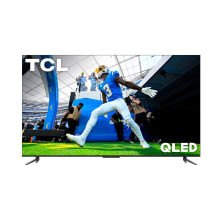How Much Was a Television in 1955? The Price of Color in the Golden Age of TV
The dawn of color television in the 1950s marked a significant shift in home entertainment. But this vibrant upgrade came with a hefty price tag. Just how much did a television cost in 1955, especially a color set? Let’s delve into the economics of early color TV and explore the factors that influenced its cost.
The Early Days of Color TV and its Price
The year 1955 saw the nascent color television market in a state of rapid evolution. While black and white sets were becoming increasingly common, color remained a luxury. The first color televisions, based on the RCA compatible system (NTSC), had been introduced just a year earlier in 1954. These initial sets boasted a 15-inch screen.
By 1955, screen sizes were increasing, with 21-inch models becoming the standard. Several manufacturers, including Raytheon and CBS, entered the market, offering competing models. This competition played a role in shaping the price of color televisions.
A 21-inch color television set in 1955 could cost anywhere from $795 to $895. Raytheon notably introduced a 21-inch model for $795, while CBS offered a trade-in program allowing consumers to get a $400 discount on a new $895 21-inch color set when trading in their old black and white television. To put this in perspective, the average annual income in 1955 was around $4,000. This meant that a color TV represented a significant investment, often costing several months’ worth of salary.
An advertisement showcasing an early color television set, highlighting its vibrant picture quality.
Factors Influencing the High Cost
Several factors contributed to the high cost of color televisions in 1955:
New Technology:
Color television technology was cutting-edge. The intricate circuitry, the color picture tube, and the complex manufacturing processes all added to the expense.
Limited Production:
Color television production was still in its early stages. Lower production volumes meant higher manufacturing costs per unit. Economies of scale hadn’t yet come into play.
Expensive Components:
The components required for color television, especially the picture tube, were significantly more expensive than those used in black and white sets.
A display of various color television tubes, showcasing the complex technology behind the color display.
High Demand, Limited Supply:
While the demand for color television was growing, production struggled to keep pace. This limited supply further inflated prices.
The Slow Adoption of Color
Despite the excitement surrounding color television, its high cost and limited programming hindered widespread adoption. By the end of 1957, only 150,000 color sets had been sold in the US. It wasn’t until the mid-1960s, with improvements in reliability, lower prices, and more color programming, that color television began to truly take off. Shows like Walt Disney’s “Wonderful World of Color,” which premiered in 1961, helped drive consumer interest and accelerate the transition to color.
A promotional image for Walt Disney’s “Wonderful World of Color”, a program that helped popularize color television.
Conclusion
In 1955, owning a color television was a status symbol, a testament to a family’s financial well-being. The cost, ranging from $795 to $895 for a 21-inch model, represented a substantial investment. The price reflected the newness of the technology, limited production, and high demand. While color TV was initially a luxury item, advancements in technology and increased production eventually made it accessible to the average consumer, transforming the landscape of television forever.








